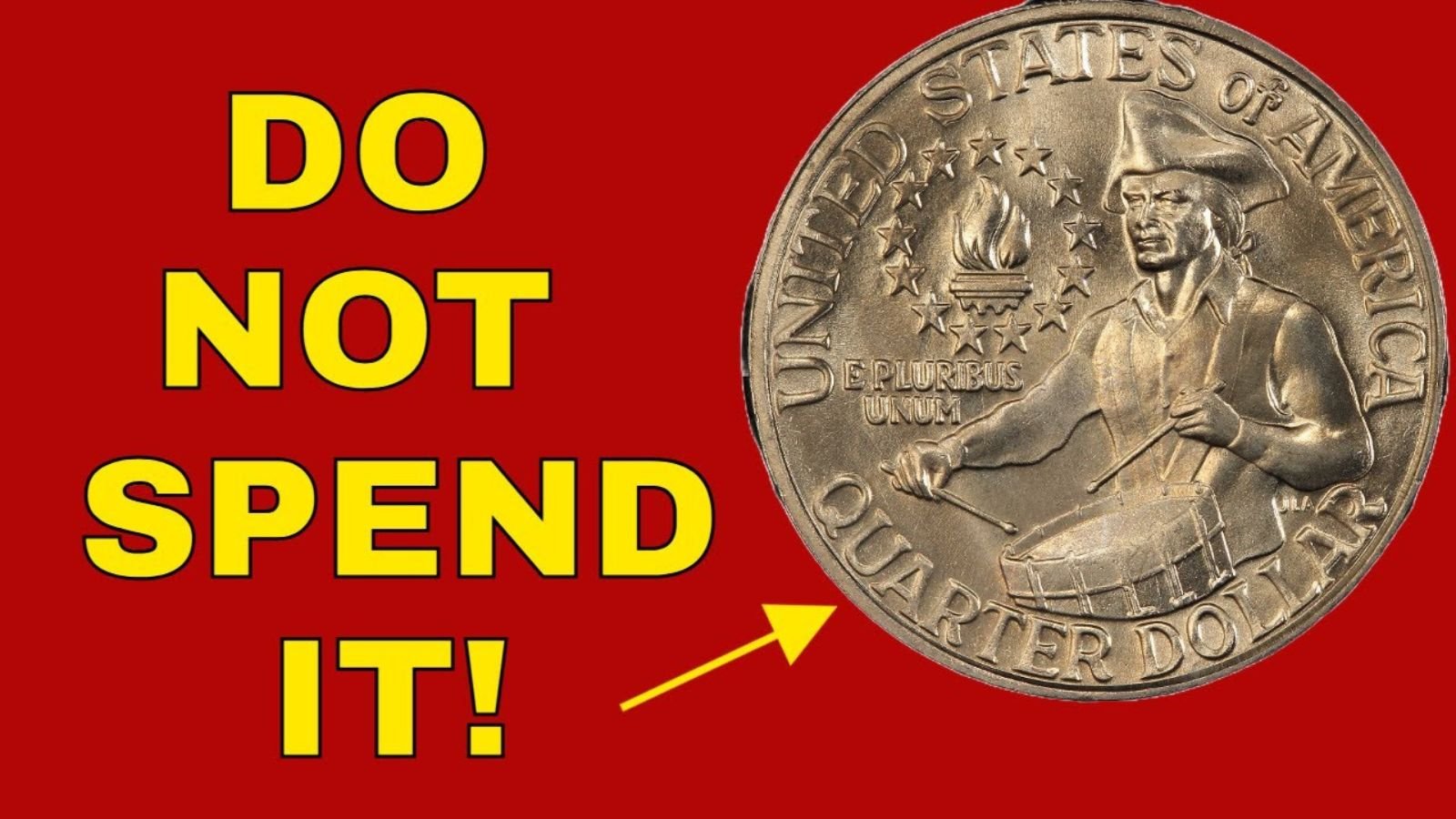In the world of U.S. coin collecting, few pieces capture the imagination quite like the 1776-1976 Bicentennial Quarters. Issued to celebrate America’s 200th birthday, these coins are unique, historically significant, and surprisingly valuable—especially if you know what to look for.
Although these quarters were minted in the millions and many are still in circulation, certain varieties, errors, and pristine-condition coins can fetch serious money. From silver versions to rare double-die errors, the 1776-1976 Bicentennial Quarters offer collectors and casual enthusiasts alike the thrill of discovering hidden treasure in their own change jars.
Let’s dive deep into the history, types, and value of these fascinating commemorative coins.
The Background of the 1776-1976 Bicentennial Quarters
The 1776-1976 Bicentennial Quarters were part of a three-coin series celebrating the 200th anniversary of the signing of the Declaration of Independence. Along with the half dollar and dollar coin, the quarter received a temporary reverse design and a special date marking the nation’s bicentennial.
Instead of the usual eagle reverse, the 1776-1976 Bicentennial Quarter features a Colonial drummer boy facing left, with a flame encircled by thirteen stars to symbolize the original colonies. The obverse side still depicts George Washington, but with the dual date “1776–1976.”
The coin was widely released into circulation, but it was also struck in special silver and proof sets for collectors. These varieties are where much of the value hides today.
Types of 1776-1976 Bicentennial Quarters
Not all 1776-1976 Bicentennial Quarters are the same. There are several distinct types based on mint mark, composition, and production quality. Here’s a breakdown:
1. Circulation Strikes (Clad Composition)
- Mint marks: No mint mark (Philadelphia), “D” (Denver)
- Composition: Copper-nickel clad
- Purpose: Everyday use
🔹 Value: $0.25 in circulated condition; $1–$3 uncirculated.
2. Proof Strikes (Clad)
- Mint mark: “S” (San Francisco)
- Composition: Copper-nickel clad
- Finish: Mirror-like surfaces with frosted design
🔹 Value: $1–$5 depending on grade.
3. 40% Silver Uncirculated Quarters
- Mint mark: “S”
- Composition: 40% silver
- Sold in: Special Mint sets (Blue pack)
🔹 Value: $5–$15 in average condition; higher for pristine examples.
4. 40% Silver Proof Quarters
- Mint mark: “S”
- Composition: 40% silver
- Sold in: Collector Proof sets (Red pack)
🔹 Value: $8–$25 depending on preservation and grade.
How to Identify 40% Silver 1776-1976 Quarters
Silver Bicentennial quarters are heavier and have a slightly different sound when dropped. To confirm:
- Check the edge: Silver quarters lack the orange copper core visible on clad coins.
- Weight: Silver = ~5.75g vs Clad = ~5.67g
- Mint mark: Must have an “S” (San Francisco)
These quarters were never released into circulation, so if you find one in your change, you’ve made a rare discovery.
Errors and Variants: The Real Money Makers
Some 1776-1976 Bicentennial Quarters are worth more because of minting errors or unique conditions. These are the coins that truly stand out at auctions and in collections.
1. Double Die Obverse (DDO)
One of the most sought-after errors is a doubling of the design elements, such as the lettering on the obverse (e.g., “LIBERTY,” “IN GOD WE TRUST”).
🔹 Value: $500 to over $2,500 based on grade.
2. Off-Center Strikes
When the coin design isn’t centered correctly, it can lead to dramatic visuals. The more off-center and visible the date/mint mark, the higher the value.
🔹 Value: $100 to $1,000+
3. Full Drum Lines
Collectors look for sharply struck coins where every detail of the drum, including both vertical and horizontal lines, is visible. These command a premium among condition-sensitive buyers.
🔹 Value: $30 to $150+
4. High-Grade MS67+ Coins
Most 1776-1976 Bicentennial Quarters have been circulated and worn down. Finding a pristine coin that grades MS67 or higher is extremely rare and valuable.
🔹 Value: $500 to $5,000+, especially if certified by PCGS or NGC.
How Many 1776-1976 Quarters Were Made?
Production numbers were high to ensure that the coins reached every corner of America. Here’s a breakdown:
| Mint | Type | Quantity Minted |
|---|---|---|
| Philadelphia | Clad Circulation | 809,784,016 |
| Denver | Clad Circulation | 860,118,839 |
| San Francisco | Clad Proof | 7,059,099 |
| San Francisco | 40% Silver Proof | 4,000,000 (approximate) |
| San Francisco | 40% Silver Uncirculated | 5,000,000 (approximate) |
Even with these high mintage numbers, it’s the condition, composition, and rarity of errors that give these coins their true value.
Common Myths About the 1776-1976 Bicentennial Quarters
Let’s clear up some confusion:
- ❌ All Bicentennial quarters are silver.
Only the “S” mint mark versions in special sets are silver. The rest are clad. - ❌ Every Bicentennial quarter is valuable.
Most are still only worth 25 cents, unless they’re in mint state or contain silver. - ❌ You can find silver quarters in circulation.
Possible, but highly unlikely. Silver versions were made for collectors.
Why Collectors Love 1776-1976 Bicentennial Quarters
There’s a reason these coins remain a staple in U.S. collections:
- 🇺🇸 Patriotic Design: The drummer boy symbolizes the American Revolution and national pride.
- 🔄 Unique Dating: Dual date “1776–1976” only appears on this coin.
- 🧭 Wide Distribution: Almost every American has handled one.
- 💎 Potential Value: Especially for silver, error, and high-grade coins.
How to Sell a Rare Bicentennial Quarter
If you suspect you have a valuable 1776-1976 Bicentennial Quarter, here’s what to do:
- Do Not Clean It – Cleaning reduces numismatic value.
- Weigh It – To determine if it’s silver.
- Get It Graded – PCGS and NGC are reputable grading services.
- Sell Smart – Use online auction sites, coin shows, or trusted dealers.
Final Thoughts
The 1776-1976 Bicentennial Quarters are more than just everyday change—they’re a piece of American history. While most may still be worth only face value, some can fetch hundreds or even thousands of dollars, depending on their rarity, condition, and minting errors.
If you’ve got a jar of old coins sitting around, take a moment to sift through it. That dual-dated drummer boy quarter might just be your next hidden treasure.
Some Important Link
| Telegram Group | Click Here |
| WhatsApp Group | Click Here |
| Home Page | Click Here |










